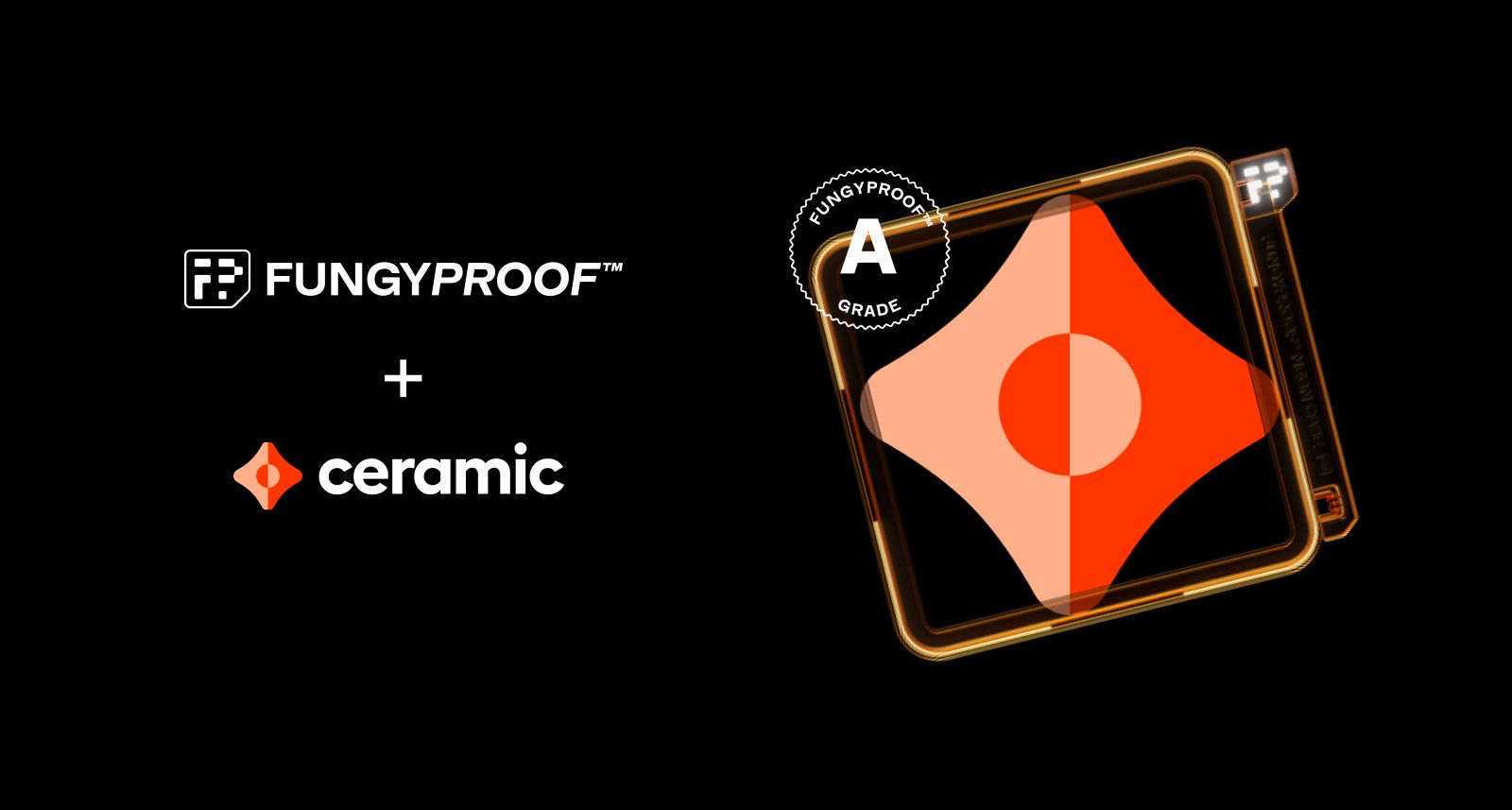FungyProof: Bringing transparency & credibility to NFTs
How FungyProof uses Ceramic for NFT grading and enriching.

There are 23,748,232 NFTs on the OpenSea marketplace, each with a different level of quality and technical construction. Some are secure, made for longevity, and technically sound. Many are not – subjecting buyers to hacks, rug pulls, broken images, and missing metadata.
FungyProof surfaces this information for users so they can make more informed decisions and improve the quality of their existing NFTs. Check out the Fungyproof app to discover information about your own NFTs!
Not all NFTs are created equal
When purchasing NFTs, most users simply look at the associated digital asset (art, song, ticket, etc.) or the creator before pulling the trigger. But an NFT is much more than a single boilerplate Smart Contract. NFTs actually consist of custom logic for token trait randomness (e.g. Chainlink VRF) and Smart Contract properties, linked metadata, linked assets such as images, animations, audio files, 3D files, and more. The manner in which Smart Contract logic is written and external assets are linked varies with each NFT. Combined, these properties make up the NFT’s “Mint Conditions.”
Want to learn more about how an NFT is constructed? Read this NFT Primer.
Token grading can inform NFT buyers
Most users are flying blind when purchasing or selling visual media NFTs today, often using subjective measures or social signal to influence buying behavior. With Fungyproof's grading algorithm, users can start to make more informed, data-driven decisions for more intelligent purchasing. Grading a token consists of running the token’s “Mint Conditions'' through the FungyProof grading algorithm. This algorithm is a weighted, score-based system, which assigns a grade based on the technical implementation of a token as well as a few other factors such as energy usage (gas efficiency) and asset retrieval latency. For a full list of the 30+ data points checked, take a look at the grading rubric.
Cases protect and enrich your NFT assets
FungyProof Cases enrich existing NFTs, digitally binding to the asset to protect it and help it stand out from the rest. The first set of cases will enrich your NFT by backing it up to decentralized storage solutions (IPFS + Filecoin). This immortalizes the NFT’s Mint Conditions and improves asset and metadata storage, thus improving your NFTs grade. Future cases will enable other enrichments such as carbon offsets, Arweave permaweb storage, attaching encrypted data, earning achievements, and more.
Cases are a new token standard developed by the Fungyproof team, known as a Non-Fungible Enrichment (NFE) that enables NFTs to own other NFTs. With cases, you can associate new data to your token without having to wrap or otherwise affect it. Once an NFE is bound to a token, any data associated with the NFE, such as the token backup, is then tied to the NFT provably and immutably.
The team's first set of cases include the standard FungyProof Case and the limited Neon Cases, which support ERC721s and many non-standard NFTs (CryptoPunks, CryptoKitties, etc.). Over time, more cases will launch with new functionality, rarities, and support for more chains. Cases are currently only available on FungyProof, but in the future the team plans to offer the option to "unbind" Cases, allowing users to remove and trade them on marketplaces.
Making data accessible through an open registry
The registry is a public service that allows anyone to view all of the information about an encased NFT. This information includes a token’s Mint Conditions, bound enrichments, provenance, and more. The registry is accessible through the FungyProof app, API, or on-chain through an NTF’s case via the enrichmentURI contract property.
The registry is designed for a few use cases:
- Buyers purchasing an NFT who want to browse the registry for NFT grades to select one that has been selectively upgraded
- Sellers who want to ensure their NFTs are high quality and technically sound for the long-term and protect their reputation
- Marketplaces that want to add information for their users
Using Ceramic to Append Metadata
The glue between the FungyProof Case and the NFT registry is the Ceramic metadata. When binding a Case to an NFT, FungyProof needed a mutable metadata storage solution. Changes that occur to the NFT's data -- such as grading, new enrichments, and transfers – need to be appended to the metadata creating a historical audit trail.
Using Ceramic, FungyProof has created one of the first implementations for dynamically appending metadata to an NFT over time. When you bind a case to an NFT, a metadata file is also generated and stored with it. As the NFT and its value changes, or new enrichment types are available, the Ceramic stream can be updated. This opens the door to unlimited possibilities for enrichable NFTs.
What's next for Fungyproof?
FungyProof is just getting started. Future plans include new types of enrichments, browser extensions, marketplace and wallet integrations, economic incentives for community contributions, and more. Check out the product roadmap to see the full list of planned updates. Plus, head over to app.fungyproof.com to grade and enrich your token!
You can also follow us on Twitter or join the conversation in Discord.
Website | Twitter | Discord | GitHub | Documentation | Blog | IDX Identity

